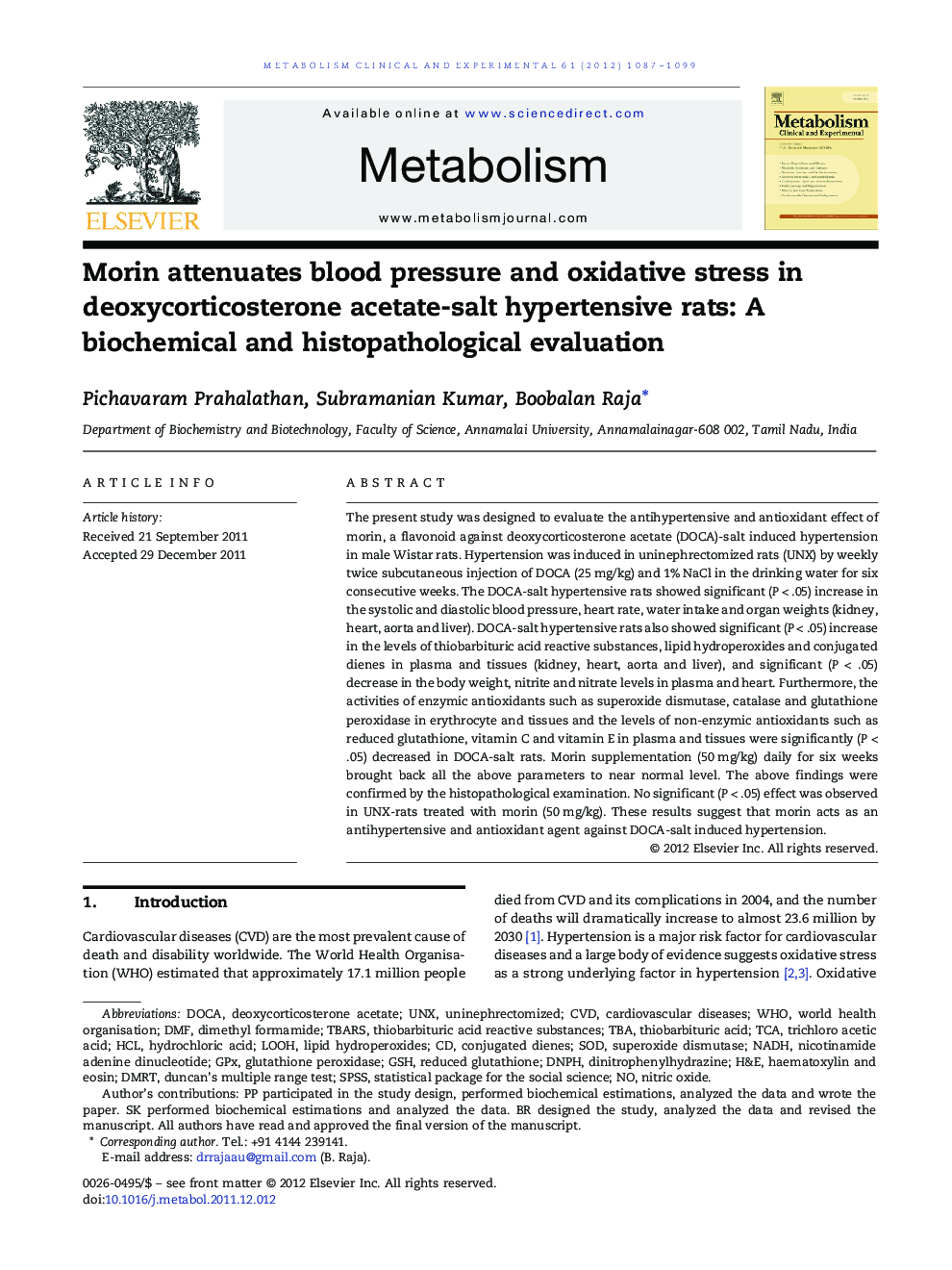| Article ID | Journal | Published Year | Pages | File Type |
|---|---|---|---|---|
| 5903670 | Metabolism | 2012 | 13 Pages |
Abstract
The present study was designed to evaluate the antihypertensive and antioxidant effect of morin, a flavonoid against deoxycorticosterone acetate (DOCA)-salt induced hypertension in male Wistar rats. Hypertension was induced in uninephrectomized rats (UNX) by weekly twice subcutaneous injection of DOCA (25Â mg/kg) and 1% NaCl in the drinking water for six consecutive weeks. The DOCA-salt hypertensive rats showed significant (P < .05) increase in the systolic and diastolic blood pressure, heart rate, water intake and organ weights (kidney, heart, aorta and liver). DOCA-salt hypertensive rats also showed significant (P < .05) increase in the levels of thiobarbituric acid reactive substances, lipid hydroperoxides and conjugated dienes in plasma and tissues (kidney, heart, aorta and liver), and significant (P < .05) decrease in the body weight, nitrite and nitrate levels in plasma and heart. Furthermore, the activities of enzymic antioxidants such as superoxide dismutase, catalase and glutathione peroxidase in erythrocyte and tissues and the levels of non-enzymic antioxidants such as reduced glutathione, vitamin C and vitamin E in plasma and tissues were significantly (P < .05) decreased in DOCA-salt rats. Morin supplementation (50Â mg/kg) daily for six weeks brought back all the above parameters to near normal level. The above findings were confirmed by the histopathological examination. No significant (P < .05) effect was observed in UNX-rats treated with morin (50Â mg/kg). These results suggest that morin acts as an antihypertensive and antioxidant agent against DOCA-salt induced hypertension.
Keywords
GPXUNXStatistical Package for the Social ScienceDOCASPSSTBARSDMFGSHTCADNPHTBADMRTHClH&EDuncan’s multiple range testTrichloro acetic acidThiobarbituric acidhydrochloric acidCardiovascular diseasesdeoxycorticosterone acetatedimethyl formamideconjugated dienesdinitrophenylhydrazineCVDWorld Health OrganisationSODSuperoxide dismutaseLOOHthiobarbituric acid reactive substancesNADHNitric oxideNAD, nicotinamide adenine dinucleotidehaematoxylin and eosinlipid hydroperoxidesreduced glutathioneWHOglutathione peroxidase
Related Topics
Life Sciences
Biochemistry, Genetics and Molecular Biology
Endocrinology
Authors
Pichavaram Prahalathan, Subramanian Kumar, Boobalan Raja,
